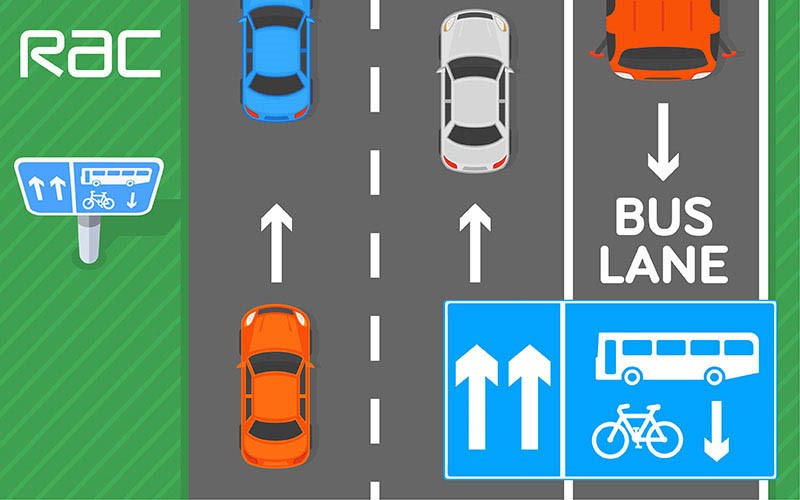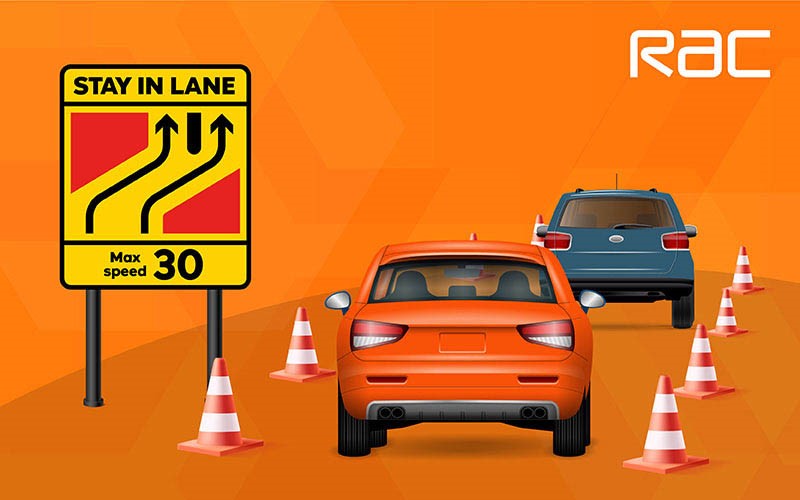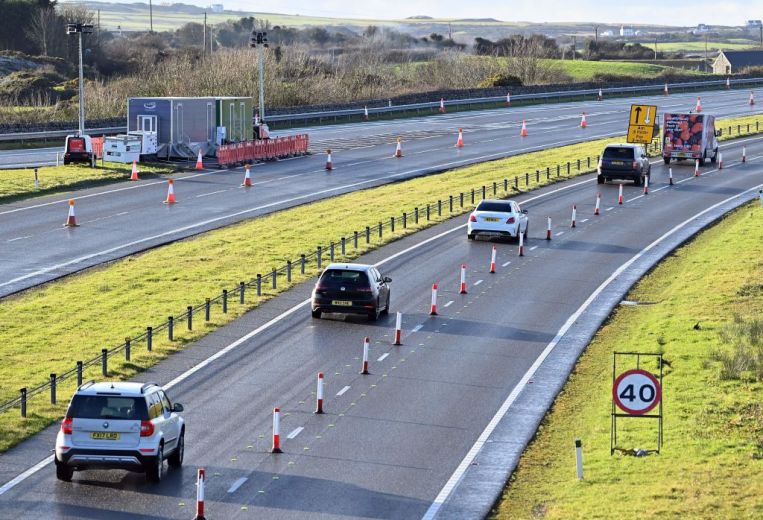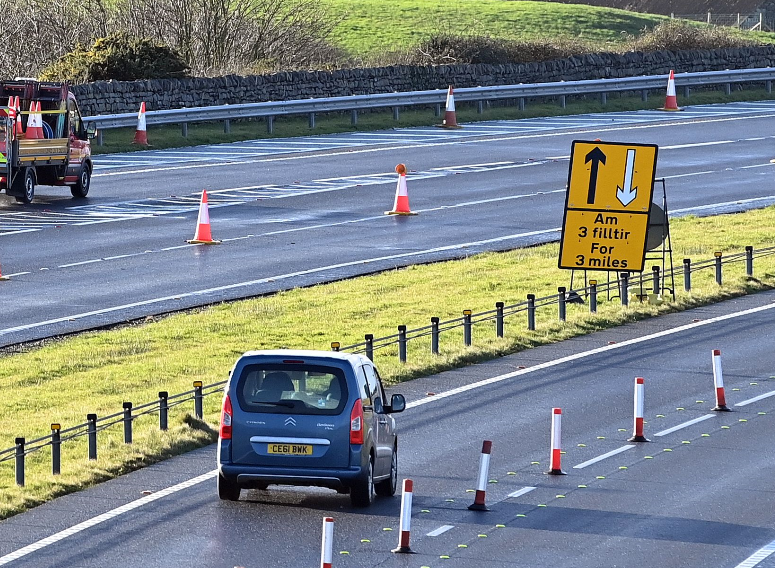To help you understand how these roads work, we have put together a complete advice guide to contraflow systems.
Read our driving advice guide to discover how a contraflow system operates and what drivers should do if they meet one on their journey.
What is a contraflow system?
A contraflow system is a traffic management strategy that allows the flow of vehicles to go in the opposite direction to what it normally would be. This only happens in very specific circumstances, such as road maintenance, an accident that needs police intervention, or special events to keep traffic moving.
Although contraflow system are not commonplace, most drivers in the UK will have experienced one during their time behind the wheel.
They are found on most types of roads, but mostly on motorways and A roads with two lanes in each direction.
Typically, one or more lanes that would normally carry traffic in the opposite direction are dedicated to outbound traffic.
These roads often have reduced speed limits applied to them, in order to maximise safety of all road users - as well as maintenance workers, police, etc, that could be using the blocked lanes.
Some contraflow systems could be in place for months, whereas others can be for a few hours. Keep an eye out for any relevant signs that will provide you with the necessary information.
Contraflow system on a motorway
The most common place a driver will see a contraflow system in operation is on a motorway. One or more lanes will be closed, and traffic will be diverted over the central reservation and onto the right hand side of the motorway (against the flow of usual traffic).
Drivers will be instructed to go at slower speeds and keep a greater distance between the car in front and themselves. Often in these circumstances there is no hard shoulder in place, which means should a car breakdown on these roads then they will need to be collected by the company overseeing the road maintenance.
Lanes in contraflow systems are often narrow, and once you are in a lane, it is important to remain in it unless otherwise instructed. This can be from a sign or from the gantry on a smart motorway.
Drivers may be kept in the correct lanes by barriers, cones and temporary cat's eyes - and have to adhere to vastly reduced speed limits.
This system is typically used during roadworks, incidents, or emergencies, allowing construction, maintenance, or police work to take place while still keeping traffic moving. Physical barriers are used to separate the opposing flows of traffic, reducing the risk of head-on collisions or other incidents.
Where would you find contraflow systems in operation?
Contraflow systems are usually in operation on motorways and A roads.
Contraflow systems on B roads, country lanes and in major cities will often be accompanied by temporary traffic lights and signage pointing drivers to alternate routes to get to certain destinations.
Contraflow bus lanes
A contraflow bus lane system can commonly be found in towns and cities across the UK, and are used to enhance public transportation efficiency, reduce travel times for buses, and encourage the use of public transport.
They will have their own lanes clearly marked, and other road users (with few exceptions) should avoid driving in them.
If a car driver drives in one of these bus lanes, they could face a fine.
These lanes will be clearly signposted. They are normally blue and will show the direction the bus can travel in compared to the rest of the traffic.
Contraflow cycle lanes
In many towns and cities across the UK where there is an extensive cycle network in place, there will be contraflow cycle lanes in operation.
Often on single lane roads, where cars and other vehicles only travel in one direction, there will be a cycle lane where there is an option to travel in either direction.
This is to help them get to their destination quicker and avoid mixing with other traffic.
These signs will also be blue and show the direction vehicles can travel in, and where the cycle lanes are in place.
Road signs for bus and cycle lane contraflow systems
Here is what the road sign for a contraflow system looks like:

Contraflow system road signs - what do they look like?
Contraflow road signs will have a yellow background, black lines instructing drivers what lane to go in, red blocks where drivers cannot go, and a reduced speed limit that is in operation for the duration of the road system.
There may also be temporary cat's eyes and barriers to keep drivers in the correct lane.
Below is what to look out for:
Often, drivers will need to reduce their speed and move into what would be oncoming traffic - except it is blocked off so they can continue their journey. Here is what it looks like:

Contraflow system on the driving theory test
You may be asked about contraflow systems on your driving theory test. The questions may include:
- Identify contraflow road signs and speed limits
- Explain where contraflow systems are likely to be in place and why
- Identify bus and cycle contraflow systems - and how they work in conjunction with where they can drive
- Point out the risks that are commonly associated with contraflow systems
To prepare for the theory test, an app like Driving Theory Test UK is a great place to start, with all necessary learning materials, hazard perception clips and Highway Code info included. You can download it here:
Are you ready for your driving test?
Hopefully, you will now have a greater understanding of contraflow traffic management systems on the roads - and also be ready to answer any questions that might appear on your driving theory test.
However, if you are looking for some extra tips on how to pass your driving test, then there are many tips from the RAC that will help.
If you have any questions about contraflow systems or the driving test, then please leave them in the comments section below.
Learner Driver Car Insurance
Only pay for the cover you need until you’ve passed your test. Get learner driver insurance so you can practice outside of your lessons.















